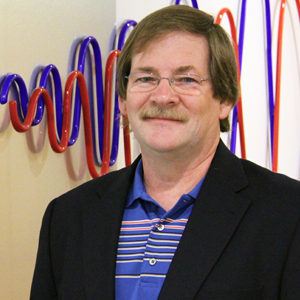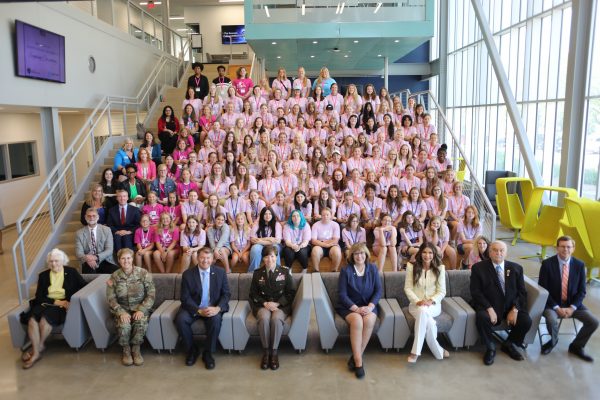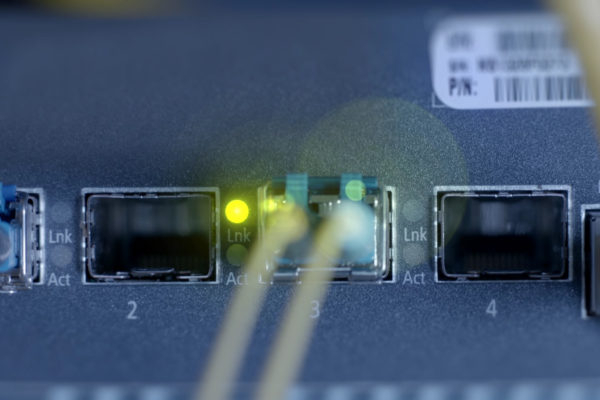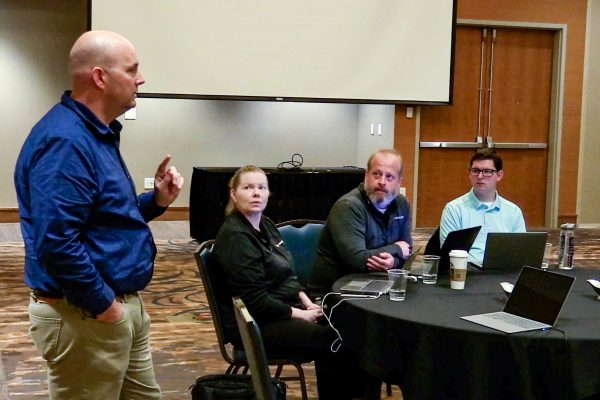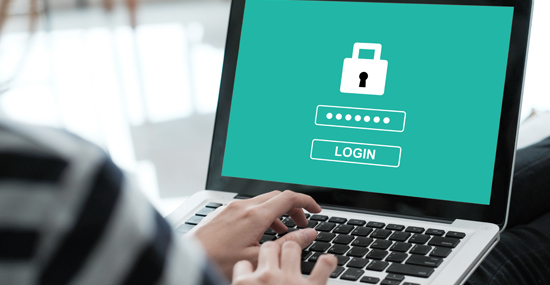
President Trump has made a strong impression in the digital world, and not just with his tweets. His first name is a popular password.
The name “donald” cracked SplashData's list of the Top 100 Worst Passwords in 2018, debuting at No. 23 in the company’s eighth annual ranking of bad passwords.
Using the name of any celebrity or well-known politician as a password to log onto a computer network is not a good idea. Their names might be easily guessed by hackers trying to steal information.
California-based SplashData, which sells password-management systems, bases its annual ranking of bad passwords on evaluating millions of passwords leaked onto the internet. The company’s goal in publishing the list is to encourage people to use stronger passwords.
The 10 worst passwords in 2018, according to SplashData, were:
- 123456
- password
- 123456789
- 12345678
- 12345
- 111111
- 1234567
- sunshine
- qwerty
- iloveyou
The first-place finisher (123456) was unchanged from the prior year. So was No. 2 (password). Easily predicted, numerical sequences always rank high in listings of bad passwords.
Other sequences that are easy to recall also come to many people’s minds when they are creating computer passwords. Qwerty (No. 9) might seem unique, but it’s similar to a numerical sequence; it’s just the first six keys on the top row of letters on any standard keyboard. The first eight keys on the row of symbols (!@#$%^&*) also are on the list (No. 20).
TIPS FOR CREATING STRONGER PASSWORDS
Hackers can use social engineering and technology to bypass passwords, so computer users have to be cautious on a variety of fronts. But they remain the first line of good cybersecurity in any business or personal protection strategy.
Computer users at all levels should strive to use good passwords, change them regularly, protect them from being exposed to others, and they should never reuse old passwords or passphrases.
In recent years, passwords have been giving way to passphrases, which are sentences or thoughts that might include spaces between words and be spiced up here and there with random symbols and punctuation marks. Passwords typically are a shorter mix of letters and symbols.
The biggest virtue of passphrases is that they are easier for users to remember and might not have to be written down. Their longer length also can increase security.
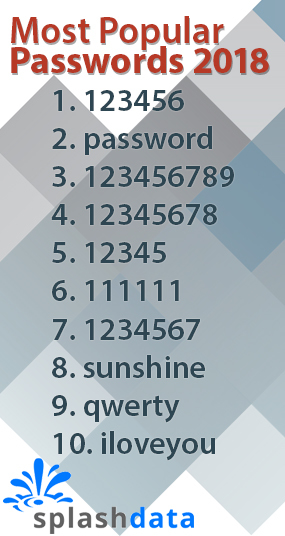 SplashData offers three tips to be safer online:
SplashData offers three tips to be safer online:
- Use passphrases of 12 or more characters, with a mix of different types of characters.
- Use a different password for each login. That way, if hackers get access to one of your passwords, they won’t be able to use it to access other sites.
- Protect your assets and personal identity by using a password manager to organize passwords, generate secure random passwords, and automatically log into websites.
Cybersecurity experts at SDN Communications and elsewhere also encourage people to use two-step authentication whenever possible. That might require, for example, that in addition to entering a password, a program a user might have to enter a code sent to his or her phone or take some other secondary, identity-verification step.
When creating a new password, don’t settle for a sequence of keystrokes or a simple word, such as “welcome” (No. 13 on SplashData’s list for 2018) or “hello” (No. 68). Don’t use the name of a sport, your children, your pet, the president, or a celebrity.
Trying blending some random words into a weird phrase, and insert a few special characters. Create something that no person could guess and that a machine would have difficulty figuring out. Creating a password is an important task. Put some thought into the process.
SDN Communications is a regional leader in providing broadband connectivity and cybersecurity services to businesses in communities such as Sioux Falls, Rapid City, Worthington and the surrounding areas.
